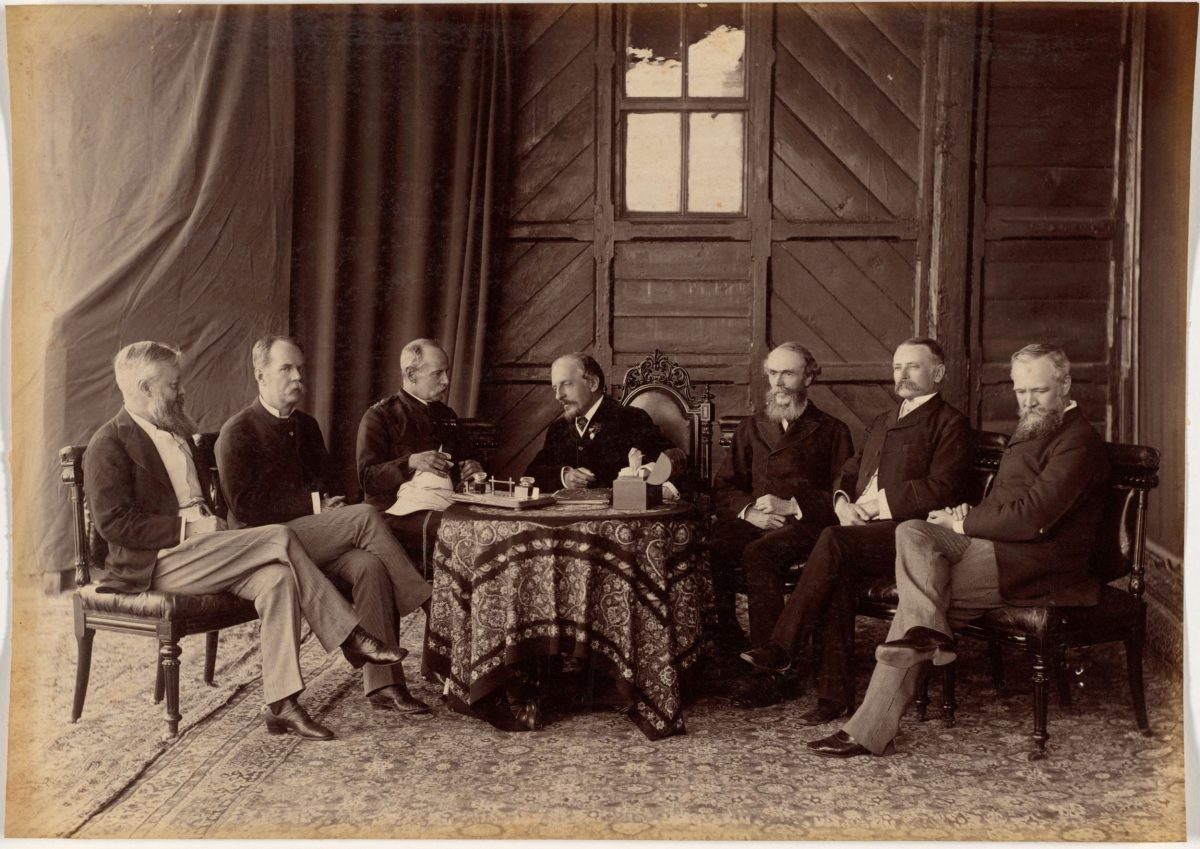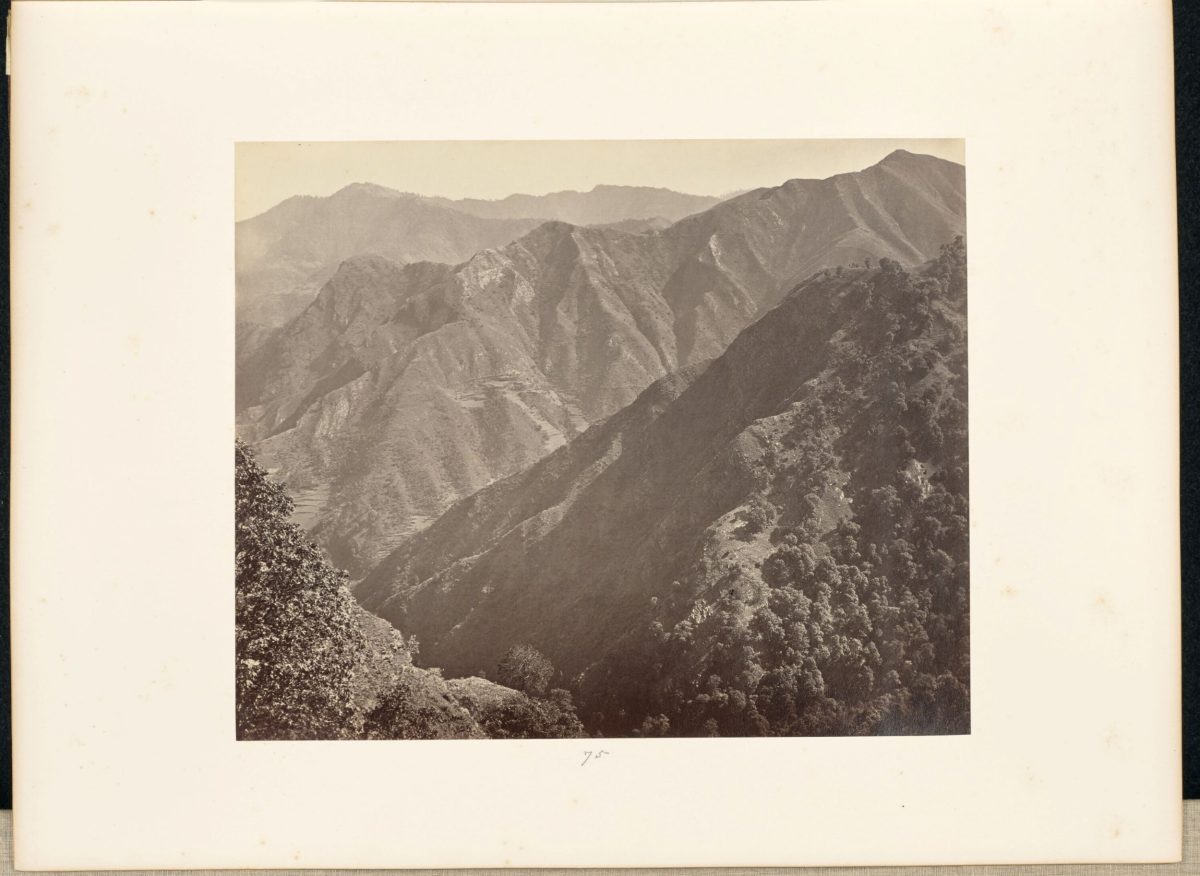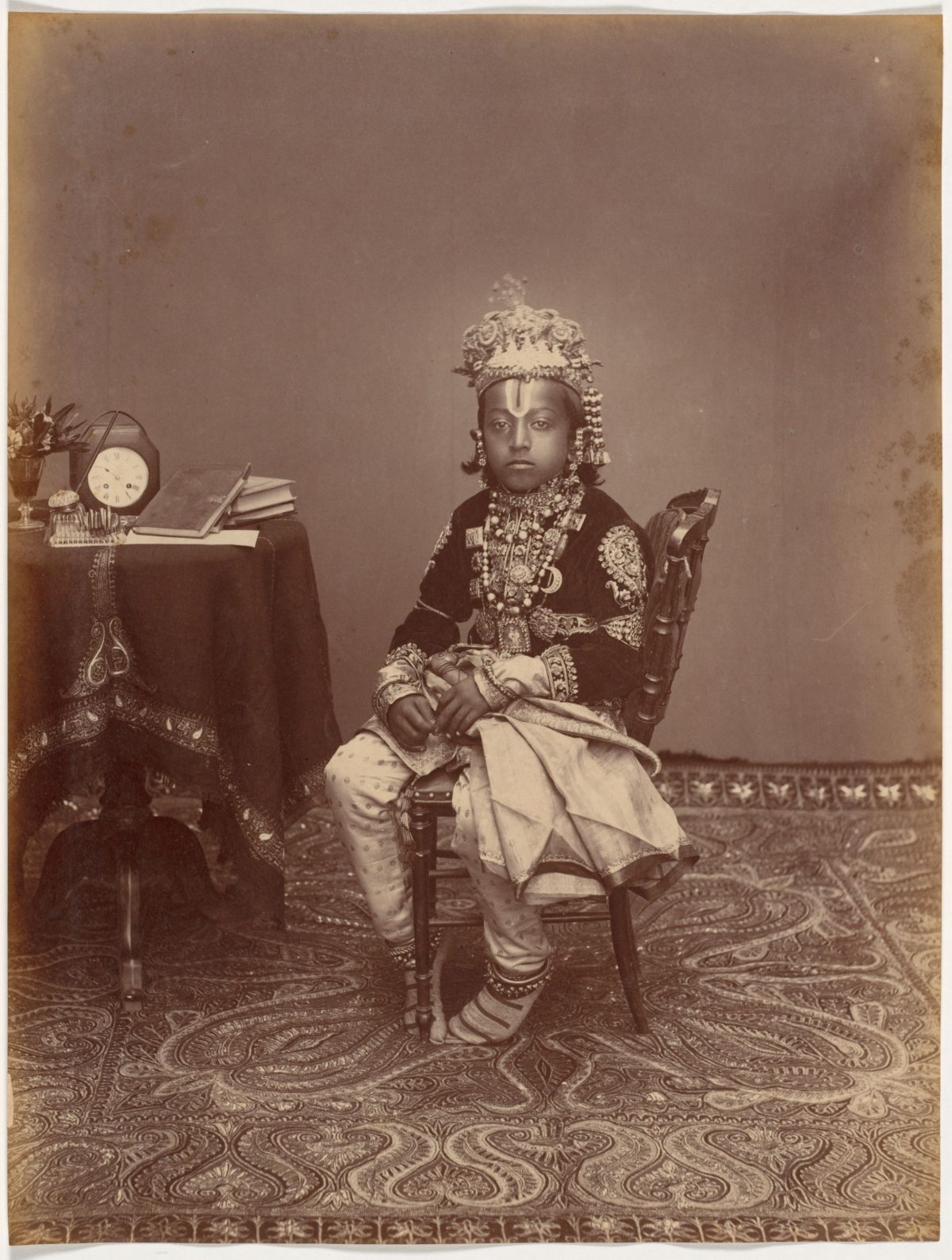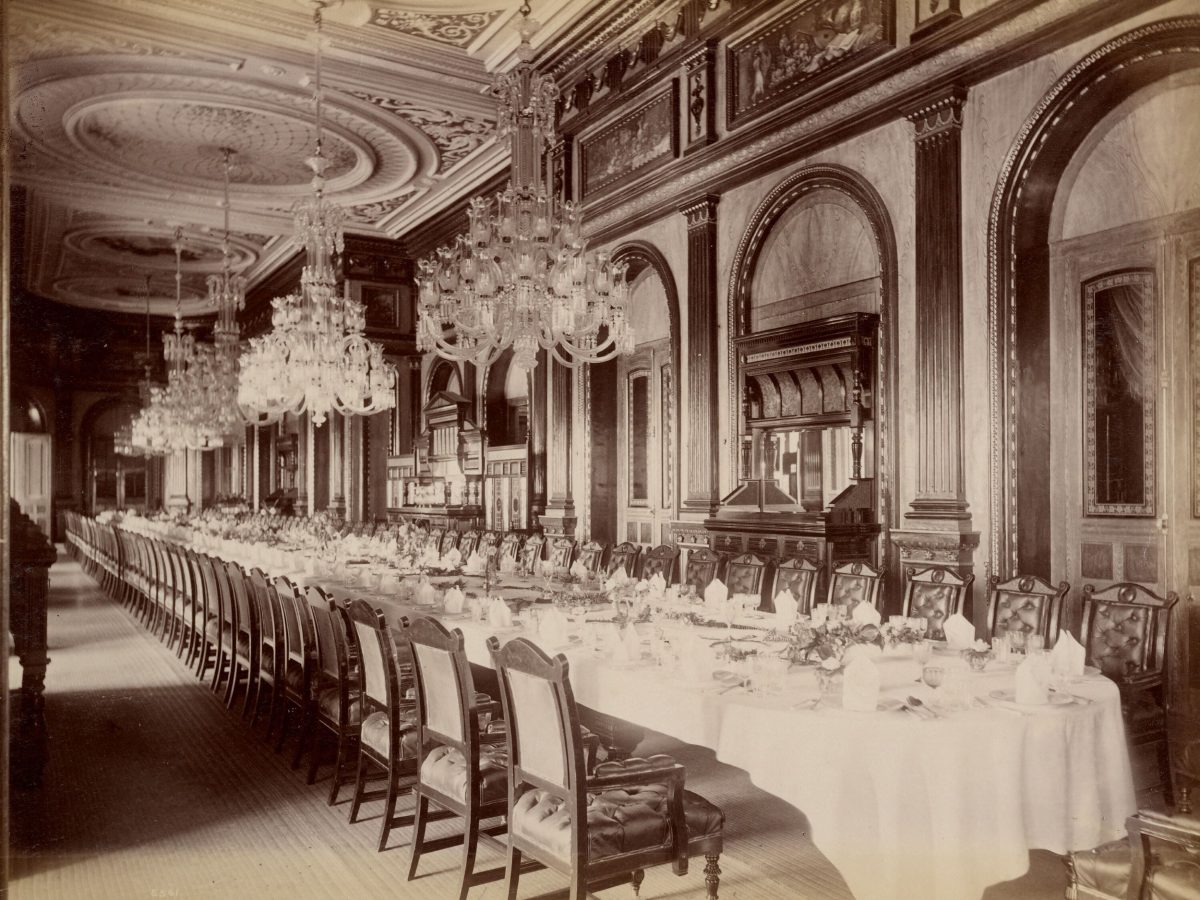From issue: #21 Thingification
Complex dynamics of colonial power, patronage, technology, and commercial and public interests informed photography in nineteenth-century India, writes Rachna Shetty from the non-profit, open-access, Bengaluru-based educational platform MAP Academy
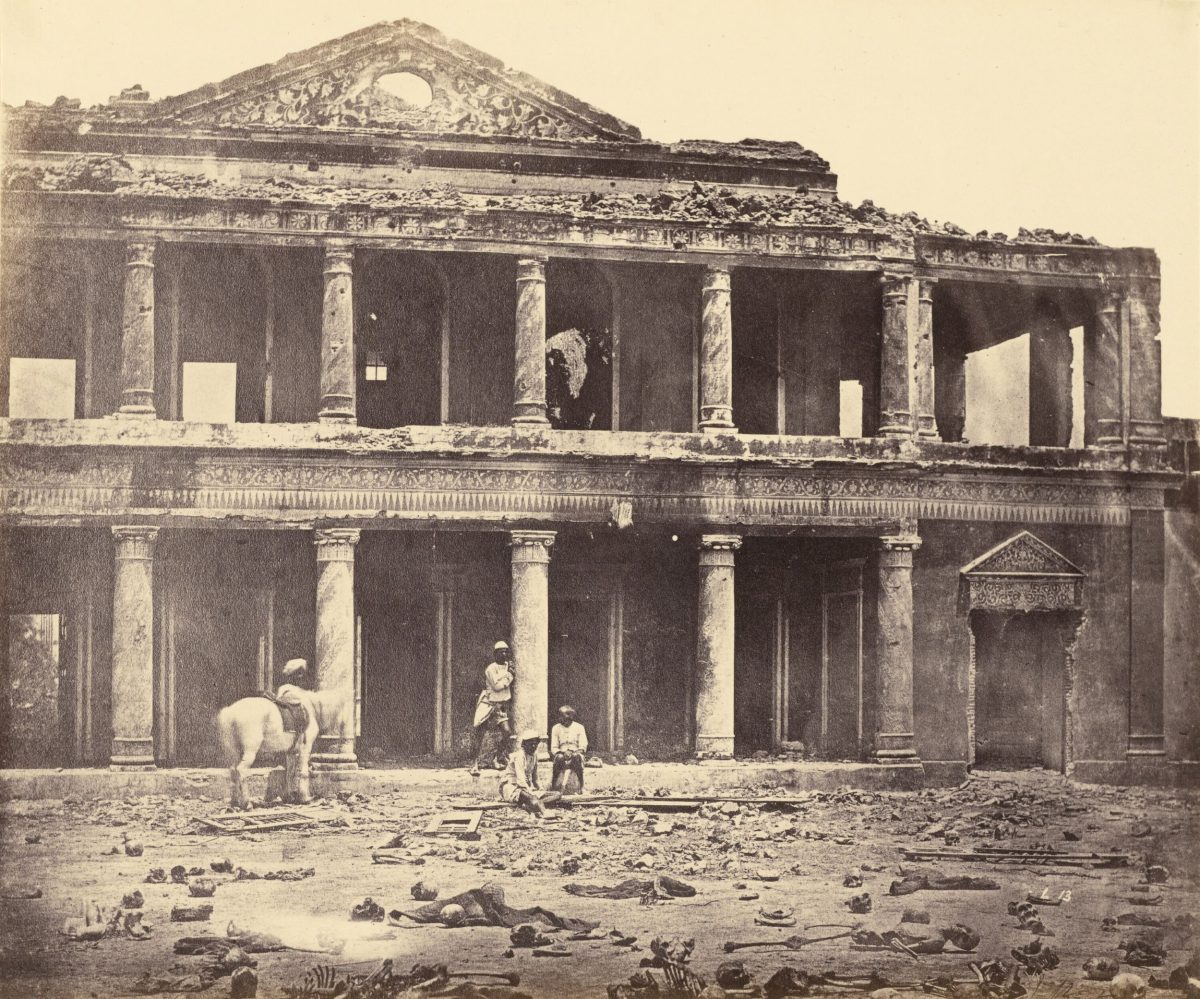
A group of Indian men stand against a palace in ruins, the ground in front of them strewn with skeletal remains. This photograph appears to capture the immediate aftermath of the violent conflict at Secundrabagh, Lucknow – one of the events that marked the unsuccessful 1857 Rebellion against British rule in India. In fact, the photograph was taken months after the capture of Lucknow (Harris, 2000, pg 127–8; Pinney, 2008, pg 127–8). The image had been carefully staged: the interred remains of Indian rebels had been exhumed and arranged in a reconstruction of reality designed to heighten the dramatic impact of British victory.
This photograph, by the Italian-British photographer Felice Beato, raises questions about the historical notion of a photograph as a representation of fact. It also offers an insight into the complex dynamics of colonial power, patronage, technology, and commercial and public interests that informed photography in nineteenth-century India.
Photography arrived in India soon after the daguerreotype was introduced in 1839. Its potential as a tool for gathering knowledge about the country’s people and places was quickly spotted, first by the British East India Company, and later the British government in India – both institutions that exerted immense political and social influence in the Indian subcontinent.
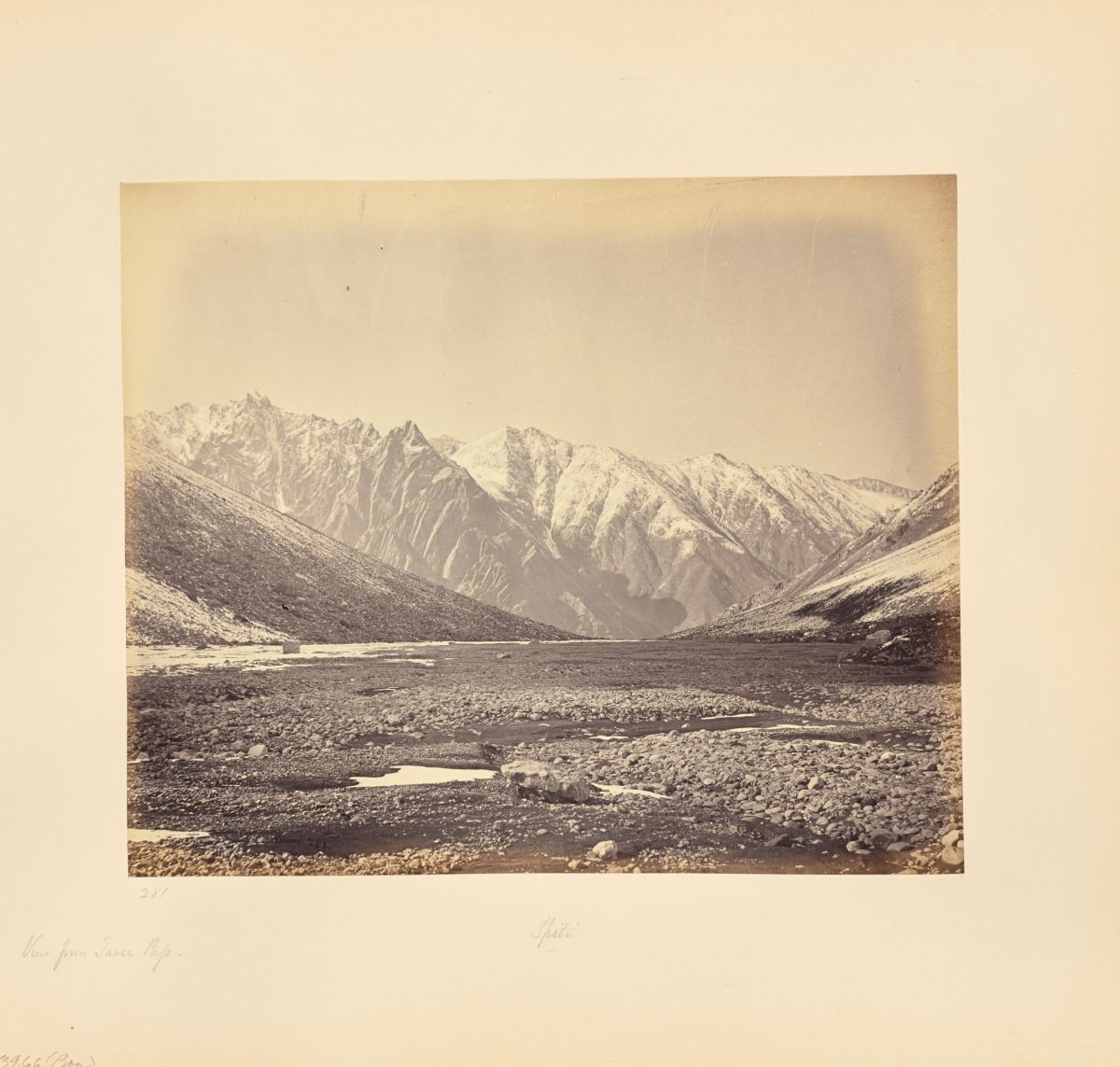
The first photographers in the country were amateurs associated with the British military and administrative services. Soon, Indian and British photographers began to work commercially, their images appearing in illustrated media and publications in Britain, or sold as prints for purchase by individual collectors. The photographs were also compiled – often alongside contextual commentary – in albums and volumes specially commissioned by British officials or the government, or sold commercially. The broad range of subjects included landscapes, monuments and architecture, portraiture and ethnographic images. Several contemporary scholars have studied the role of these genres in the wider discourse of cultural politics of colonialism.
Samuel Borne’s landscape photographs, for instance, are more than sweeping views of mountains, valleys and rivers in northern India and the Himalayas. These images were circulated in British India and England not only as souvenirs, but equally as important visual indexes of a geography still being ‘explored’. They drew on the historical genre called the picturesque – an idealised representation of nature and landscape through a formulaic framing of the terrain, with its vegetation and water bodies, and a deliberate use of light and shadow (Auerbach, 2004, pg 48; Chaudhary, 2012, pg 112).
The picturesque ideal also suffused eighteenth-century paintings of the Empire by artists such as William Hodges and Thomas Daniell. These images of untamed land homogenised the unfamiliar into the familiar, making them consistent with colonial aims of settlement, expansion and commerce (Auerbach, 2004, pg 47). Bourne’s landscapes too, in domesticating a landscape perceived to be hostile, reassured the viewer of the Empire’s control over the region. (Ryan, 1997, pg 51)
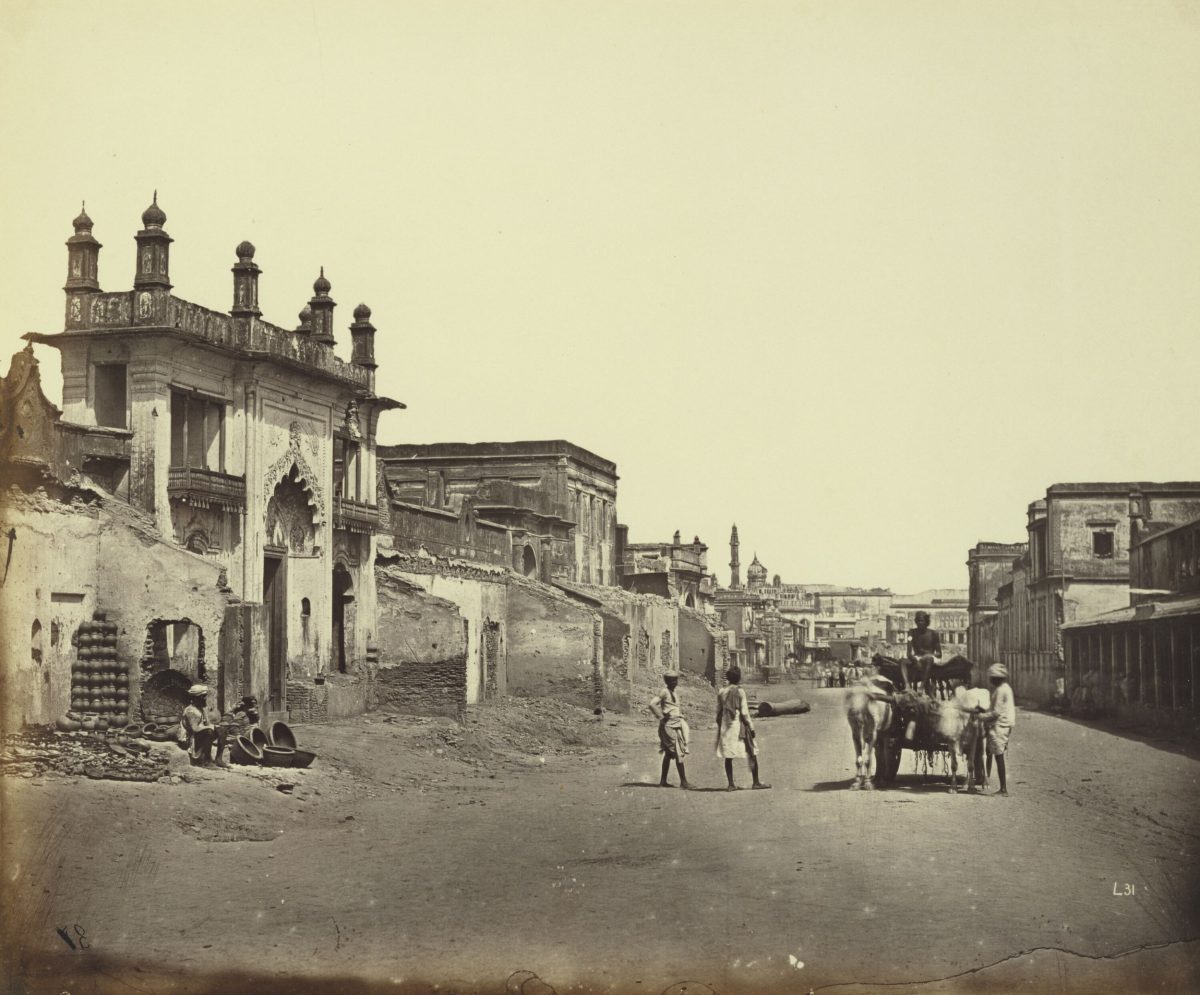
Monuments and ruins that dotted the Indian subcontinent were also photographed, as part of the landscape and for ‘objective’ knowledge-gathering. These images and their subjects, however, served as justification for British intervention, as in the case of Thomas Biggs’ photographs showing the worn state of monuments and Hindu sculptures, interpreted as pointing to social and moral decay (Falconer, 2000, pg 72). When, around the turn of the century, officials of the Crown looked to the extensive documentary works of James Fergusson, who had previously surveyed and classified Indian architecture and sculpture, it was to glean socio-cultural categories and groupings that might enable them to establish power and govern the country more efficiently.
The domestication of territories took on a more forceful tone in the subcontinent’s war photography in the nineteenth century. Whilst Beato’s images memorialised the sites of the 1857 Rebellion for a British military audience, the photographs of the Anglo-Afghan War (1878) produced by the Bourne & Shepherd studio, and Willoughby Wallace Hooper’s images of the Anglo-Burmese War (1885–86), were published commercially (Harris, 2000, pg 120, 122; Ryan, 1997, pg 76; Howe, 2008, pg 713). The wide circulation of such images helped reinforce an imagination of the imperial world for the audience, signalling Britain’s command over an expansive empire of ‘backward’ territories and ‘exotic’ people.
Such a narrative was strengthened with the ethnographic photography of the period, ostensibly a means of knowledge-gathering that could inform political and cultural views (Chaudhary, 2012, pg 97, 102). An important example is the ethnographic work in eight volumes, The People of India (1868–1875), studied in post-colonial discourse for its explicit and implicit ties linking photography to colonial administration. The project called on colonial military officers from all over British India to submit photographs, annotated with descriptions, of the various social groups in India (Pinney, 1997, 34–5).
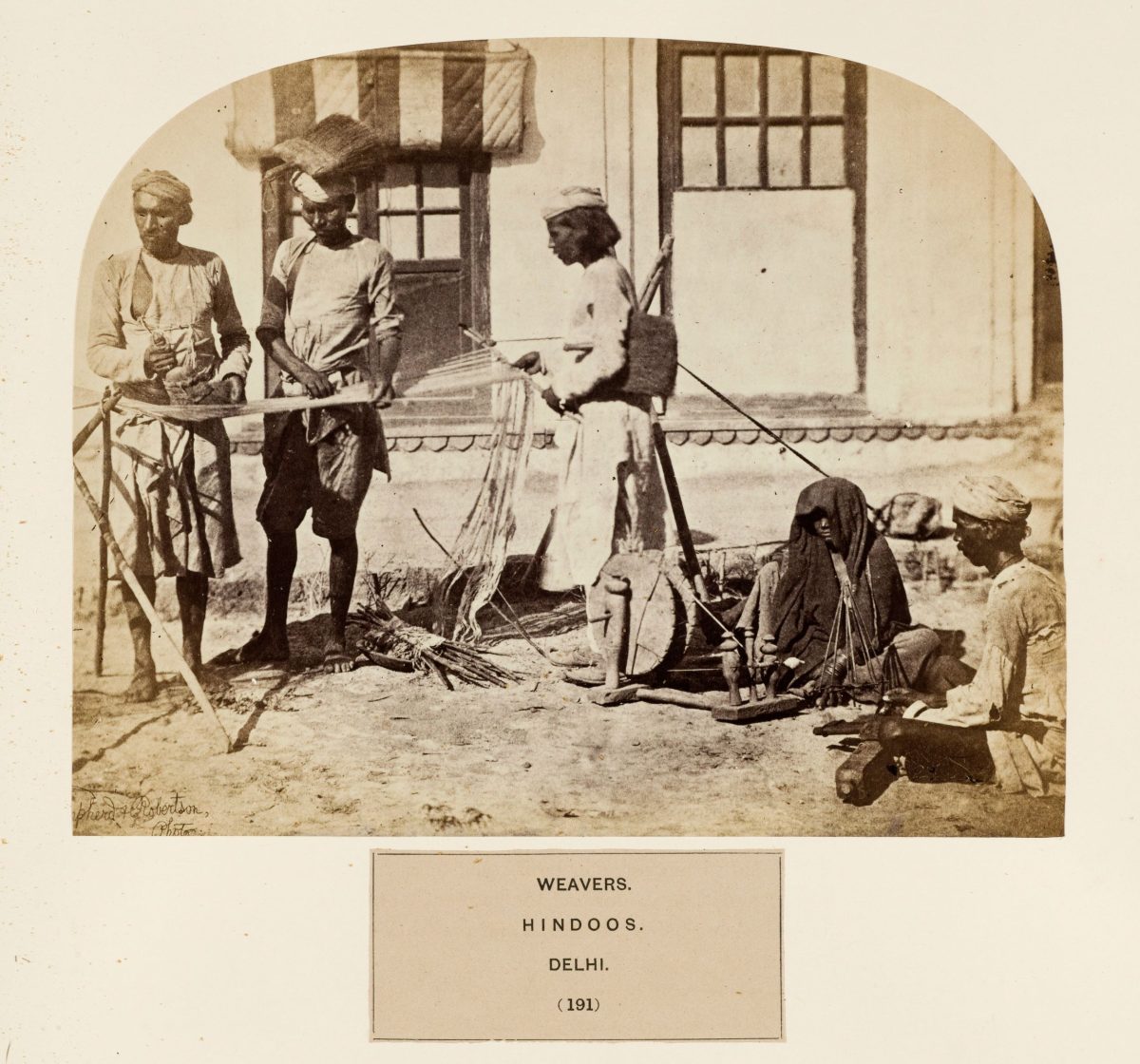
The volumes were meant to be sold commercially and distributed by the Political and Secret Department of the India Office. However, the publication was criticised for its inconsistent structure and factual inaccuracies. The annotations accompanying the images confused caste, community and tribe whilst attributing to communities traits such as business acumen, martial prowess and perceived criminality (Ryan, 1997, pg 156; Pinney, 1997).
The People of India was not the only such work of ethnographic photography. Other photographic works that sought to reinforce certain ideas include Oriental Races and Tribes: Residents and Visitors of Bombay (1863, 1866); the images in William Elliot Marshall’s A Phrenologist Amongst the Todas (1873); and Maurice Vidal Portman’s images of native inhabitants of the Andaman Islands in the 1890s. Calling the Toda people ‘primitive’, Marshall’s work also incorporated the dubious practice of phrenology, the inference of character and mental abilities by measuring skulls (Poskett, 2019, 196-98).
Portman’s images of Andamanese communities depicted individuals in frontal and profile views, often naked, next to anthropometric tools such as Lamprey’s grid, callipers and clamps. Circulated in periodicals and presented alongside maps, such images shaped perceptions such as those of racial inferiority, and provide an insight into the social and political policies of the British in India (Ryan, 1997, pg 156; Poskett, 2019, pg 196).
Albums such as the government-commissioned The Rajas and Taaluqdars of Oudh (1880) explicitly acknowledged Indian landlords’ loyalty to the British, but the actions of other groups in the rebellion meant they were perceived as violent or untrustworty. These reductive views of individuals and groups were extrapolated as attributes of entire communities illustrated in these ethnographic volumes.
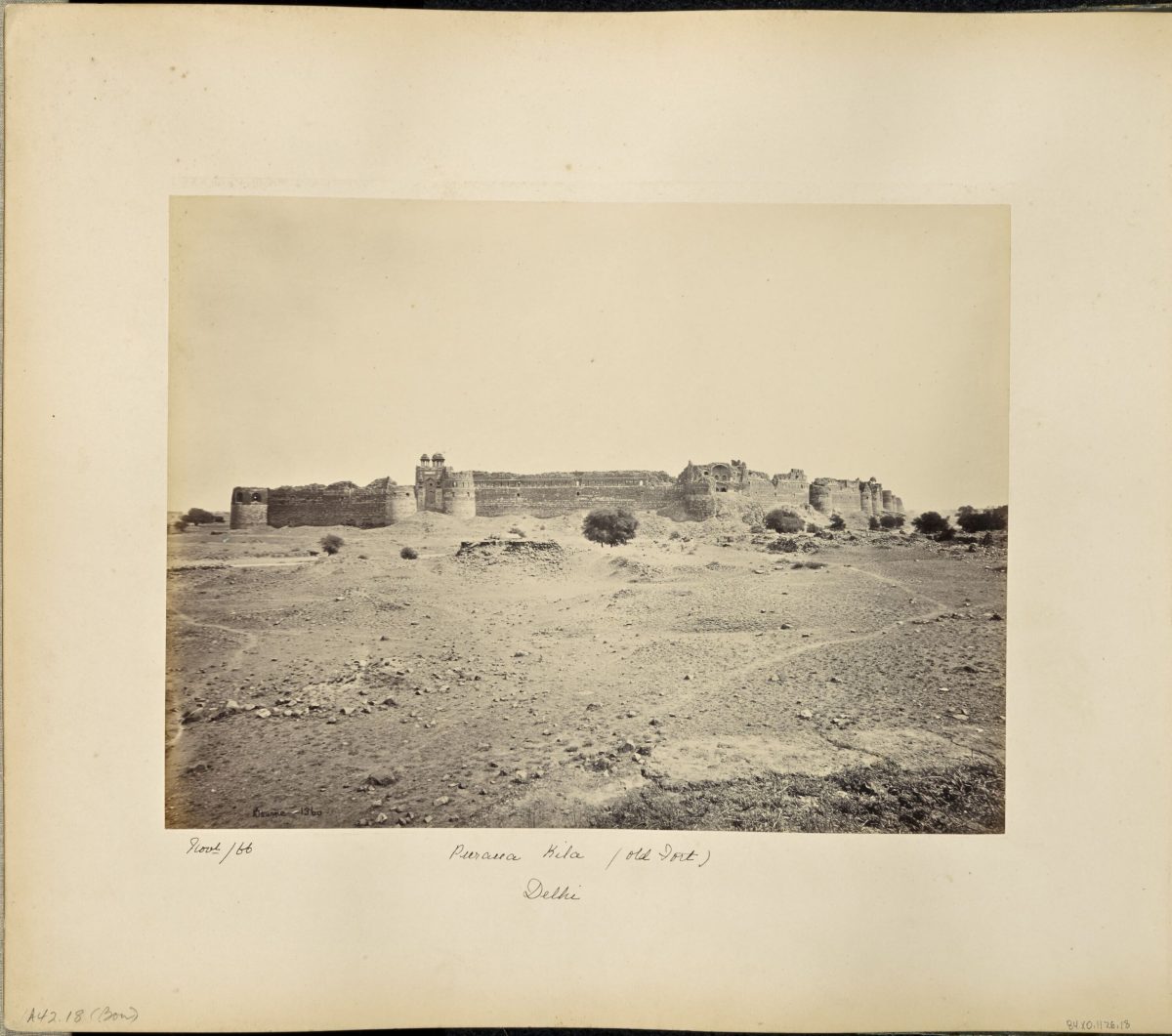
The People of India is also contextualised by contemporaneous and subsequent political events shaped by existing economic and social policies. In the face of British commercial expansion in India, the land rights of forest dwelling communities eroded rapidly. To ensure land control and prevent revolt, these communities were forcibly settled into designated areas, or were limited by laws such as the Criminal Tribes of India Act, which characterised entire indigenous communities as criminally inclined (Abraham, 1999, pg 1752; Poskett, 2019, pg 201). Exercises such as the Census of 1881 further delineated distinctions between groups, and, in describing certain communities as ‘primitive’ or ‘dying out’, justified social and political control and the ‘civilising’ mission.
The framework of coercion in Portman’s Andaman Islands photographs demonstrates the implicit expectation observed by the scholar Deborah Hutton — that indigenous populations must ‘make their bodies available for documentation’ (Hutton, 2007, pg 272). Hutton extends this observation to famine photography, such as Hooper’s images of the Madras Famine between 1876 and 1879. While Hooper’s methods drew censure – he reportedly prioritised the quality and composition of his images over the experience of the famine victims who were his subjects, segregating individuals by age and gender, and refusing them aid – the photographs were printed in newspapers and sold commercially (Komireddi, 2016; Howe, 2008, pg 713).
In documenting famine victims and the state’s relief efforts two decades later, the photographers of Lala Deen Dayal’s studio in Hyderabad State employed an approach not far-removed from Hooper’s, in an example the shared conventions of Indian and British photographers. While this was aided by publications circulated through India and Britain, it also points to the networks of patronage between the British government and Indian princely states.
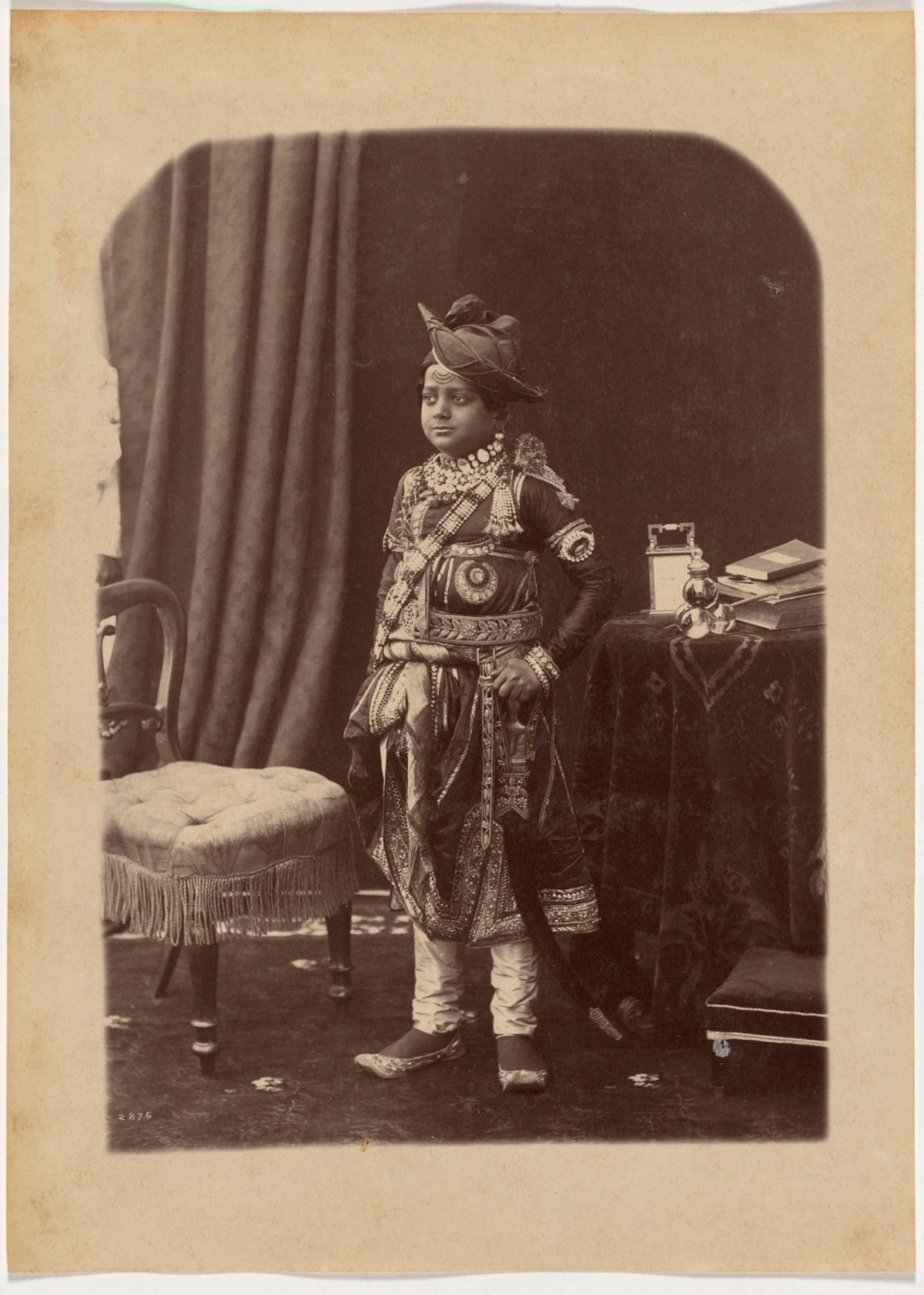
These images form only a part of the photographic archive of colonial rule in India. By the twentieth century, aided by developments in image production and camera technology, Indian photographers had begun documenting the socio-political realities of the time as well as the growing Independence movement. However, the historiography of early colonial photography, in India and in the wider colonised world, also raises questions of how these images, and their makings and motivations, impact our visual understanding of cultures in the present day.
In the present era of widespread, affordable access to photography, how do the remnants of colonialism and colonialist photography play out? How do we encounter reductive ideas of community, society, nationhood and the exotic today?
This article is written by Rachna Shetty from the MAP Academy, a non-profit, open-access educational platform committed to building equitable resources for the study of art histories from South Asia. Through its freely available digital offerings – Encyclopedia of Art, Online Courses, and Stories – the Bengaluru-based MAP Academy encourages knowledge-building and engagement with the region’s visual arts.
Bibliography
Abraham, Susan. “Steal or I’ll Call You a Thief: ‘Criminal’ Tribes of India.” Economic and Political Weekly 34, no. 27 (1999): 1751–53. http://www.jstor.org/stable/4408149
Auerbach, Jeffrey. “The Picturesque and the Homogenisation of Empire.” The British Art Journal 5, no. 1 (2004): 47–54. http://www.jstor.org/stable/41614516
Chaudhary, Zahid R. Afterimage of Empire: Photography in Nineteenth Century India. Minneapolis: University of Minnesota Press, 2012.
Falconer, John. “A Passion for Documentation: Architecture and Ethnography.” In India Through the Lens Photography 1840–1911. Edited by Vidya Dehejia, 69–118. Washington D.C.: Smithsonian Institute, 2000.
Farquhar, Jessica. “Beyond Binding: Reconceptualizing Watson and Kaye’s The People of India 1868-1875.” PhD dissertation. University of California, Los Angeles, 2016. https://escholarship.org/content/qt0323w55j/qt0323w55j.pdf
Harris, David. “Topography and Memory: Fealice Beato’s Photographs of India, 1858–1859.” In India Through the Lens Photography 1840–1911. Edited by Vidya Dehejia, 119–48 . Washington D.C.: Smithsonian Institute, 2000.
Howe, Kathleen. “Hooper, Colonel Willoughby Wallace (1837–1912).” In Encyclopedia of Nineteenth-Century Photography, Volume 1: A–I. Edited by John Hannavy, 713–4. New York: Routledge, 2008.
Hutton, Deborah. “Raja Deen Dayal and Sons: Photographing Hyderabad’s Famine Relief Efforts.” History of Photography 31, no. 3 (2007): 260–75. http://dx.doi.org/10.1080/03087290701440247
Komireddi, Kapil. “Pomp and Privation in Victorian India.” University of Oxford, July 2016. Accessed September 07, 2023. https://open.conted.ox.ac.uk/resources/documents/pomp-and-privation-victorian-india-kapil-komireddi
MAP Academy Encyclopedia of Art. “Maurice Vidal Portman”. Accessed September 8, 2023. https://mapacademy.io/article/maurice-vidal-portman/
MAP Academy Encyclopedia of Art. “Pushpamala N”. Accessed September 8, 2023. https://mapacademy.io/article/pushpamala-n/
MAP Academy Encyclopedia of Art. “Annu Palakunnathu Matthew”. Accessed September 8, 2023. https://mapacademy.io/article/annu-palakunnathu-matthew/
Pinney, Christopher. Camera Indica: The Social Life of Indian Photographs. Reaktion, 1997.
Pinney, Christopher. The Coming of Photography in India. London: The British Library, 2008.
Pinney, Christopher. “Colonialism and Culture.” In The SAGE Handbook of Cultural Analysis. Edited by Tony Bennett and John Frow, 382–405. London: SAGE Publications, 2008.
Poskett, James. Materials of the Mind: Phrenology, Race and the Global History of Science 1815–1920. Chicago: University of Chicago Press, 2019.
Ryan, James R. Picturing Empire: Photography and the Visualization of the British Empire. London: Reaktion Books, 1997.
